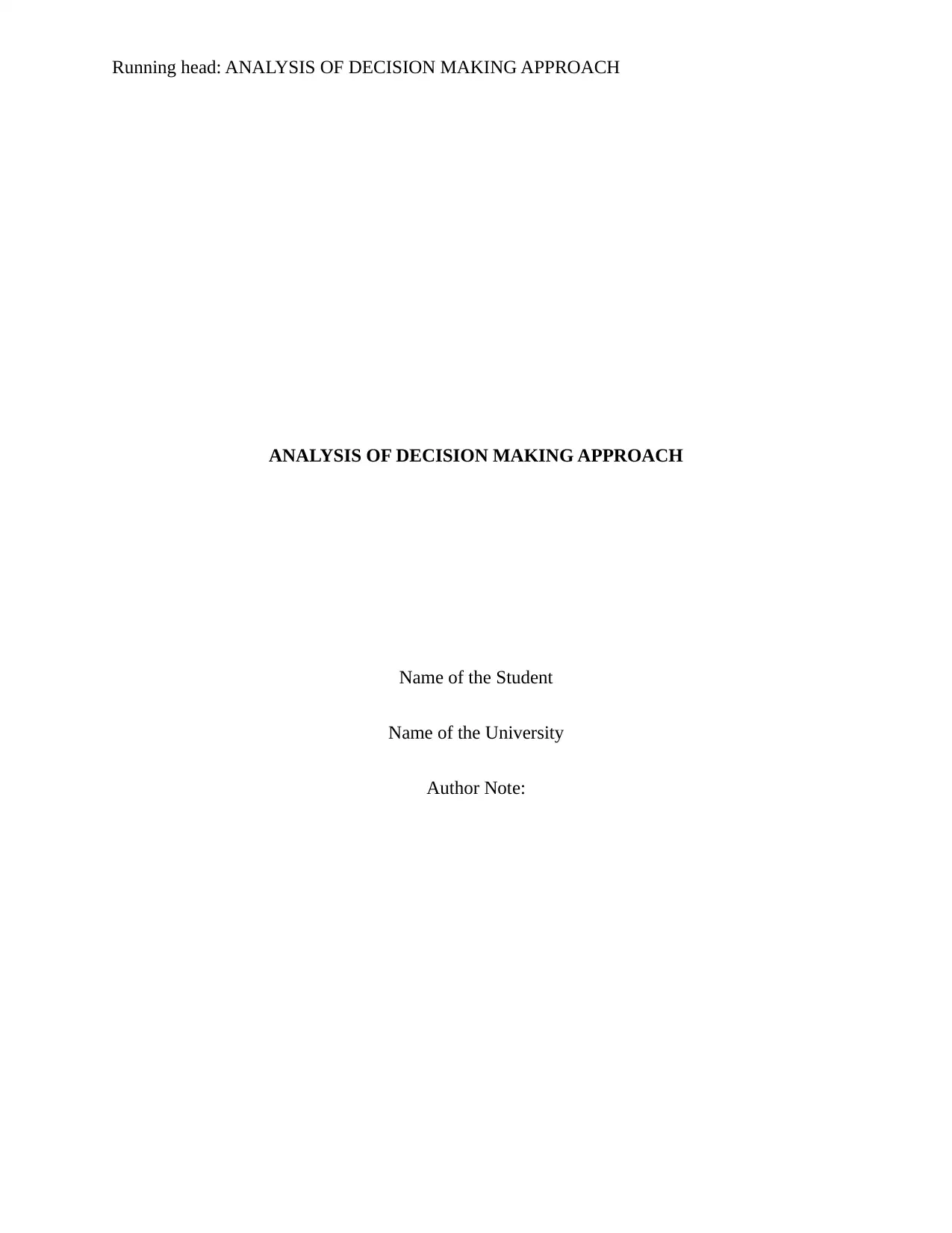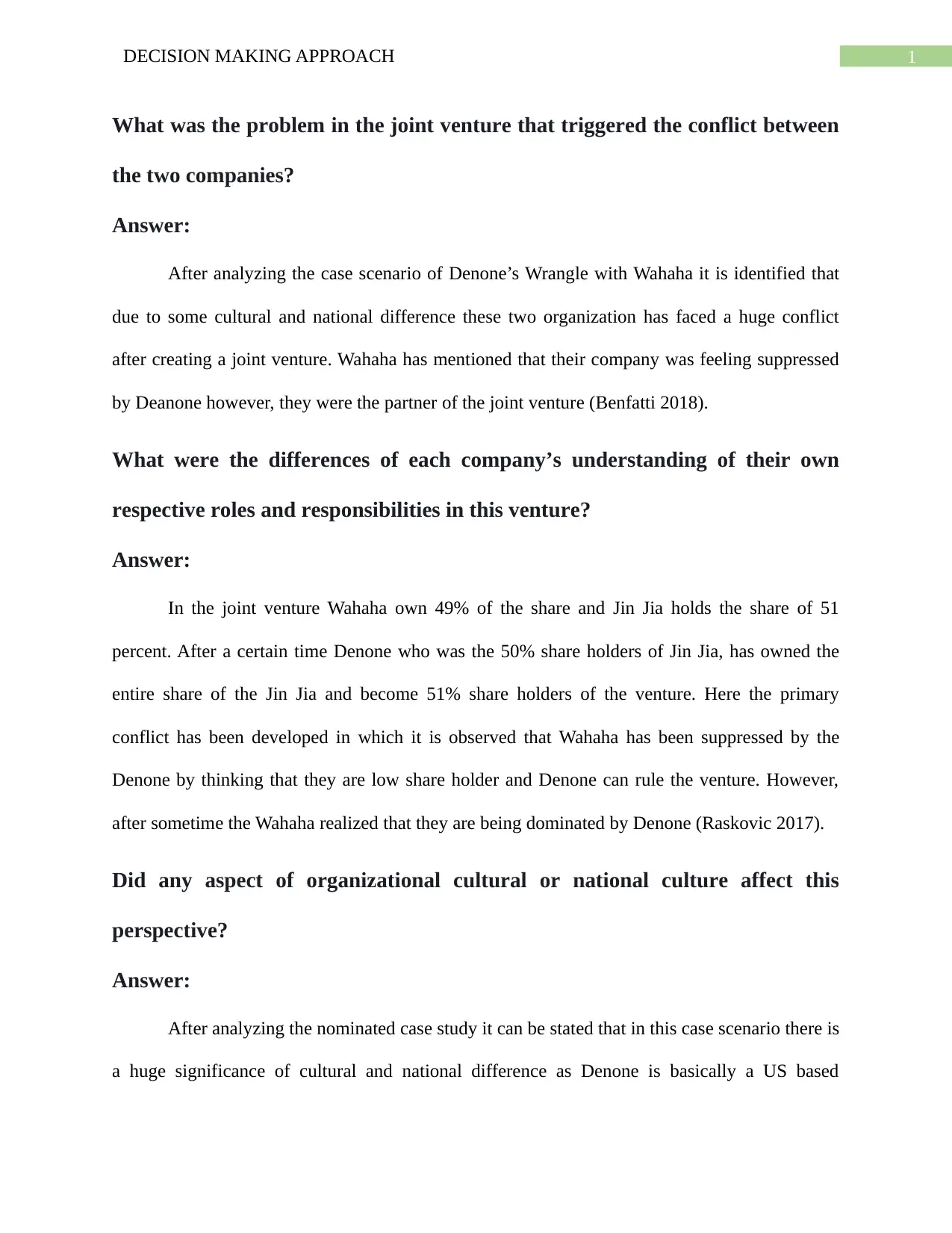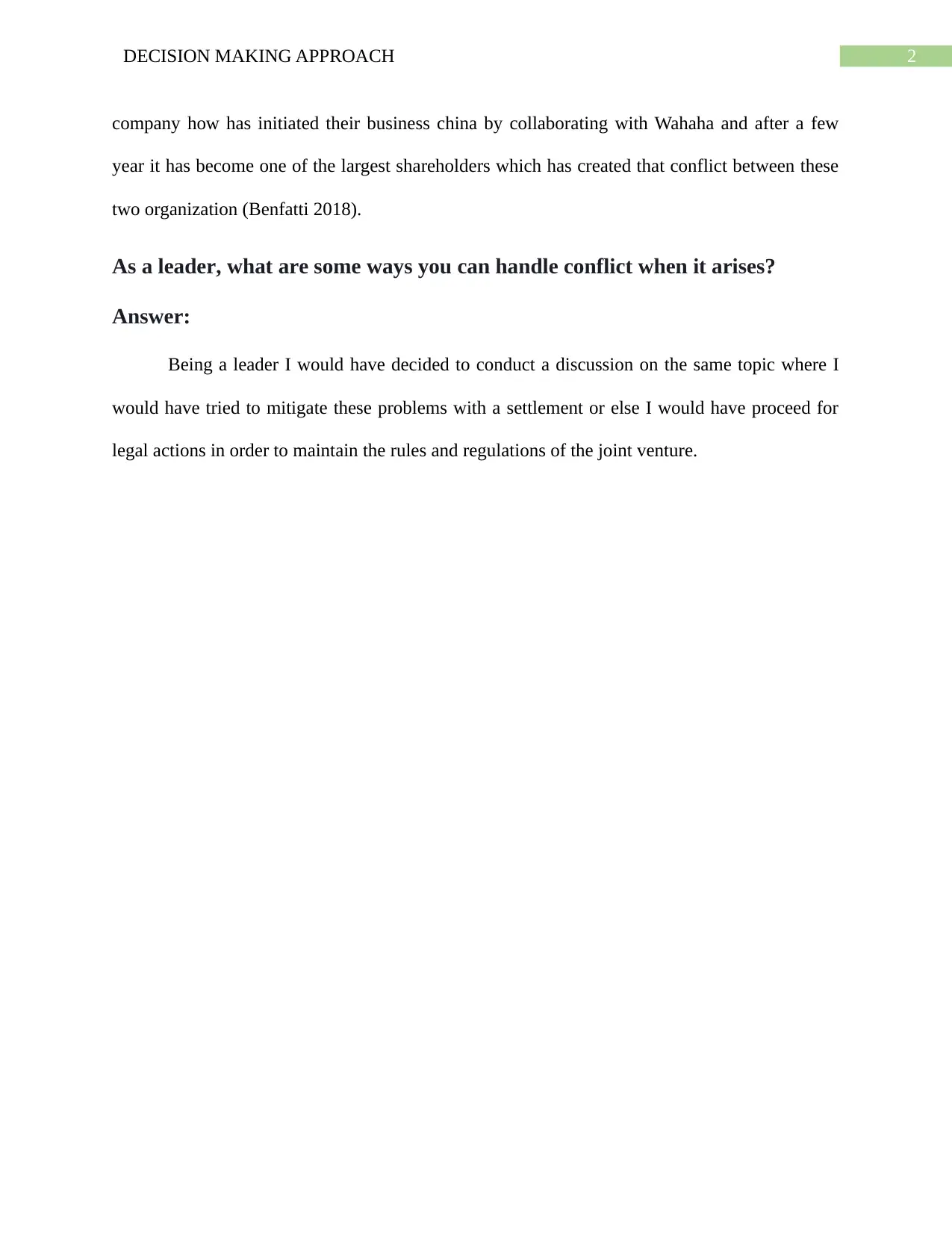Leadership and Decision Making: Analysis of a Joint Venture Conflict
VerifiedAdded on 2022/08/14
|4
|471
|16
Case Study
AI Summary
This case study examines the conflict arising from a joint venture between Danone and Wahaha, highlighting the impact of cultural and national differences on decision-making and organizational dynamics. The analysis identifies the root causes of the conflict, including differing perceptions of roles and responsibilities, with Wahaha feeling suppressed by Danone. The study explores how cultural factors, specifically the differences between a US-based company (Danone) and a Chinese partner (Wahaha), exacerbated the conflict. The assignment further investigates leadership strategies for conflict resolution, proposing approaches to mitigate disputes and maintain the integrity of the joint venture, including discussion and legal actions. References to academic sources support the analysis.
1 out of 4











![[object Object]](/_next/static/media/star-bottom.7253800d.svg)